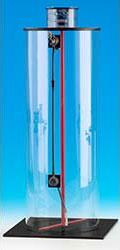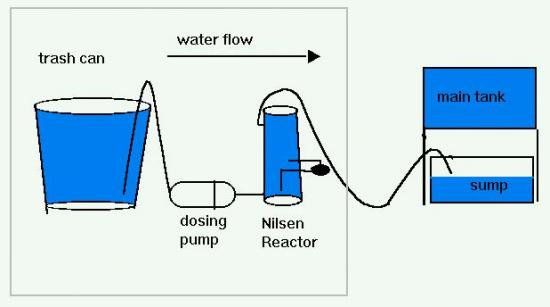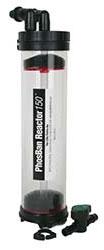-
Posts
8,253 -
Joined
-
Last visited
-
Days Won
31
Content Type
Profiles
Forums
Gallery
Everything posted by Harlequinmania
-
A randomized controlled trial of fish oil given intravenously to patients in intensive care has found that it improves gas exchange, reduces inflammatory chemicals and results in a shorter length of hospital stay. Researchers investigated the effects of including fish oil in the normal nutrient solution for patients with sepsis, finding a significant series of benefits. View the full article
-
i have moved this to the correct section.
-
I am pining up these information with regards to different types of reefing equipments available in the market and what it does to our aquarium system ,and i hope these information help as a easy references guide for newbie and members . ** Some of the information is extracted from different sources and compile together here for easy reading and understanding. ** HAPPY REEFING ... Calcium Reactor Calcium reactor or some called it Calcium carbonate reactors have become a popular way of replacing the calcium and carbonate taken up by corals in the process of calcification. In a layman terms, it is a device used to create blance of alkalinity in the system by which a container filled with calcium carbonate (CaCO3) media over which aquarium water is passed with the addition of carbon dioxide. Adding carbon dioxide lowers the pH of the water, making it acidic, and dissolving the calcium carbonate to provide the aquarium with calcium and alkalinity. A calcium reactor is one of the most efficient ways of constant supply of calcium into your aquarium. Kalkwasser Reactor Kalkwasser reactor or something called Nilsen reactor is a simple and reliable way to add kalkwasser to your aquarium . It uses a chamber in which a motor or a magnetic stirrer keeps the kalkwasser agitated. Some other design uses a small pump to keep the water circulating in the reactor and the solution saturated. Kalkwasser is an excellent source of calcium, hydroxide ions to buffer alkalinity (PH), an unmatched ability to encourage coralline algae growth, and it precipitates phosphates out of your system water. Protein Skimmer A protein skimmer or foam fractionator is a device used mostly in saltwater aquaria to remove organic compounds from the aquarium water before they break down into nitrogenous waste. Protein skimming is the only form of aquarium filtration that physically removes organic compounds before they begin to decompose, lightening the load on the biological filter and improving the water's redox potential. Although the process of foam fractionation is commonly known for removal of waste from aquaria, it is, in fact, a rapidly developing chemical process used in the large-scale removal of contaminants from wastewater streams and the enrichment of solutions of biomolecules. The basic units design of a skimmer consists of a main chamber through which aquarium water flows. Air is injected into the column as fine bubbles. The surface of the bubbles collect proteins and other substances and carries them to the top of the device where a collection cup allows the foam to leave the main chamber. Here the foam condenses to a liquid, which is removed from the system. This material can range in color from a light tea to black tar. Every skimmer operates either by co-current flow, in which the water flows upward in the column along with the bubbles, or by counter-current flow, in which the water flows downward against the direction of the bubbles. Counter-current skimmers are more efficient because of the greater contact time the water has with the bubbles. And they are basically two main types of Skimmer ; Air pump or motor driven skimmer. Air stone driven The original method of protein skimming, it is not completely obsolete, although many newer technologies have eclipsed this method. The air stone is a ceramic block with an air hose attached that runs to a small air pump. The stone is placed at the bottom of a tall column of water. The tank water is pumped into the column, allowed to pass by the rising bubbles, and back into the tank. To get enough contact time with the bubble, these units can be many feet in height. While this method has been around for many years, many regard it as inefficient for larger systems or systems with large bio-loads. Aspirated or Needle wheels skimmer The premise behind these units is that a venturi valve can be used to introduce the bubbles into the water stream. The tank water is pumped through the venturi, in which fine bubbles are introduced, then enters the skimmer body. This method is popular due to its compact size and high efficiency. A new variation on the venturi is the needle wheelâ„¢. This method of bubble generation evolves from another method that uses a turbine within the water stream to create bubbles. Essentially this method uses a pump to pull water past a venturi - before the pump - then past the pump's impeller which smashes the bubbles into very fine bubbles, and into the skimmer column. Downdraft Design Pumped tank water enters through a small vertical column next to the main column, that contains a plastic media that shreds the water, entrapping air in to the stream. The result is a milky white appearance of very fine bubbles. The stream enters a mixing box and is allowed to rise within the reaction chamber. This is one of the current top skimming methods due to its compact size and high efficiency. Predominantely known as a "Beckett" protein skimmer, which is based on a brand name of a foam jet, or pond foaming nozzle producing very fine bubbles. Spray Induction / High Speed Aeration Skimmer This method is related to the downdraft, but uses a pump to power a spray nozzle, fixed a few inches above the water level. The spray action entraps and shreds the air in the base of the unit, which then rises to the collection chamber. Venturi Operated The premise behind these units is that a venturi valve can be used to introduce the bubbles into the water stream. The tank water is pumped through the venturi, in which fine bubbles are introduced, then enters the skimmer body. This method is popular due to its compact size and high efficiency. A new variation on the venturi is the needle wheelâ„¢. This method of bubble generation evolves from another method that uses a turbine within the water stream to create bubbles. Essentially this method uses a pump to pull water past a venturi - before the pump - then past the pump's impeller which smashes the bubbles into very fine bubbles, and into the skimmer column. Different types of skimmer arrangement in marine system Ozonizer An ozonizer is a type of air or water purifier which uses ozone 03 to kill bacteria and filter out a wide range of contaminants. Ozone itself is a form of oxygen, though much less stable than the common O2. Ozone is present naturally, mostly in the upper levels of the atmosphere, where it helps deflect ultraviolet radiation. Concentrations of ozone below the atmosphere can be a serious health risk, as ozone is highly toxic to humans and most other forms of life. Ozone has been used in reef aquaria for many years. It is claimed to have many benefits, ranging from increased water clarity to decreased algae , increasing ORP, reduce nitrate, increase skimmer performance, decrease yellow water ect. However it should be use and handle with care as too much 03 in the water will affect the live stocks and potential undesirable health effects on human if too much is breath in. A reliable ORP controller can be used to control the amount of 03 content in the water as well as using carbon at the water outlet path to reduce excess 03 in the water. Nitrate Reactor / Denitrator There are basically two main types of denitrators, one using anoxic conditions to convert nitrates to nitrogen and the other uses sulphur to remove nitrates and phosphates, and the possibilty of adding calcium into the system as well. Basically, a sulphur Denitrator uses a tubular acrylic column in which is filled with sulphur beads. Seawater is pumped through the sulphur at a very slow rate " this is a very fast drip when the device is mature. The action, by bacteria, takes place in a very low oxygen environment. As the bacteria do not have a ready oxygen supply, they are forced to use the nitrate, from which oxygen is extracted, breaking down the nitrate. Generally one molecule of nitrate is replaced by one molecule of sulphur. The sulphur has no detrimental affect on the seawater as it is present in a high percentage anyway. The only result to watch is that the output from the sulphur can be acidic. This is easily remedied by running it through some calcareous material before it returns to the aquarium. The water flowrate through the reactor is similar to that of a calcium reactor. A by-product is the production of carbon dioxide, which may lower the alkalinity and pH in the system. The production of carbon dioxide is minor so will have minimal effect on the system as a whole. Calcium carbonate can also be added to the sulphur denitrator, taking advantage of the depressed pH to dissolve the calcium carbonate and introduce calcium and alkalinity to the water at the same time. Sulphur denitrators are efficient and easy to run. . Fluidized Bed Reactor A fluidized bed reactor (FBR) is a type of reactor device that can be used to carry out a variety of multiphase chemical reactions. In this type of reactor, a fluid is passed through a granular solid material (usually a catalyst possibly shaped as tiny spheres) at high enough velocities to suspend the solid and cause it to behave as though it were a fluid. This process, known as fluidization, imparts many important advantages to the FBR as it help in maximium efficiency absorbation of the media in the chamber .
-
Selling these spare equipment; 1) AZOO Ozone generator 60mg (it has a digital timer inbulit together with LED light indicating for Timer and Density scale of Ozone with setting keypad , easy for operation.), will throw in a free air pump as well. ( $ 60.00) 2) Ehiem universal pump 1250 ( $50.00 ) Pump output approx I/h 1200 Del.head approx Hmax m 2,0 Power consumption W 2 8 Dimensions HxWxD mm 121 x 178 x 96 used for 1.5 year ctc me at 9231 6904 for fast deal. viewing / collection in CCK thanks
-
awesome.. going to get one for my tank too..
-
The sediments of the Kimmeridge Clay Formation were deposited during the Late Jurassic between around 160 and 145 million years ago, the age of the reptiles. They are the main oil source rock in the North Sea. However, within this unit beds rich in organic matter are interspersed with organic-poor sediments. New evidence demonstrates that organic-poor sediments were probably caused by post-depositional loss of organic matter during so-called "burn-down" events. View the full article
-
Offshore wind power and wave energy foundations can increase local abundances of fish and crabs. The reef-like constructions also favor blue mussels and barnacles. What's more, it is possible to increase or decrease the abundance of various species by altering the structural design of foundation. View the full article
-
Seem that you are not using a wave maker ? How did you manage to create the water movement in the tank for your SPS ?
-

Japanese-styled, USA engineered CREE LED spotlights
Harlequinmania replied to planula's topic in Members Tank & Specs
Hi Bro, May i know what camera you are using to take the photos ? Are you using a DSLR ? Nice.. -
Have you decom or ?
-
Nice to see your tank full of corals and Beautiful Flashers..
-

External Thermostats controller attached to chillers
Harlequinmania replied to MOssrope's topic in General Reefkeeping_
mabye you can state what chiller you are currently using now in order for us to help ? -
Department of Chemistry, The Pennsylvania State University, University Park, PA 16802. Many factors contribute to the 'value' of a skimmer to an aquarist, including quality of construction, size, footprint, noise level, ease of cleaning, energy efficiency of the pump, and of course, the ability to remove organic waste from aquarium water. View the full article
-
Terry discusses all the articles in this month's issue along with a bit more about his freshwater aquarium. View the full article
-
When posting a question and seeking for help, we will need you to provide us as much information as you can about your tank / system, with as much details as possible being given so as to let us and the rest of us analyse and troubleshoot your problems faster and easier. Some of the pertinent details should include: 1. How old is your system, inclusive of the cycling period. 2. What kind of system type are you running in terms of natural filtration (Jaubert, Berlin, modified berlin, DSB, etc). 3. System volume including sump. 4. Water flow (incl equipment used to achieve it). 5. Filtration type (refugium, skimmer, skimmerless etc). 6. Additional filtration types (chemical eg. GAC, polyfilters etc and mechanical eg. filter wool) 7. Lighting photoperiod, scheme, color temp, type and wattage (NO flourescents, T5, Power compacts, Metal halides). 8. Water parameters (esp. salinity, ammonia, nitrites/nitrates, temperature, calcium, alkalinity, PH etc) 9. Test kits used to measure the above (brand names and age of test kits). 10. Stocking of your tank (number & types of coral, fish, inverts, etc). 11. Additives used (kalkwasser, B-Ionic, calcium reactor, trace elements etc). 12. Feeding (types of food and feeding schedule). 13. The last thing you remember doing to your tank before the problem occured. 14. How long have you been in this hobby (it would give us a rough indication of your experience). Before you ask questions, we hope that you have at least read through a good marine aquarium book or read the pinned up links in the New to the Hobby forum for the basics of the marine hobby. A lot of wasted time could have been avoided if SOME effort have been made on the part of the hobbyist in terms of research and knowledge-gathering. Knowledge is key to success in this hobby and it is EXPECTED of a serious and responsible hobbyist to learn as much as he can before attempting anything that he is not even 99% unsure of. Some mistakes cannot be undone. Livestock cannot be reincarnated or be resusitated. Money cannot be made back so quickly. Be a Responsible Reefer! Happy Reefing!
-
given out to the first newbie whom PM me.. thread closed..
-
Hi, Giving away these spare test kit which i have..Priority will be given to newbie. Sera KH test kit Sera N03 test kit API Cal test kit Collection in CCK ave 3. pls PM me if interested
-
Genetic analyses refute the hypothesis that an overly abundant population of minke whales is creating too much competition over food for populations of other whale species to rebound, according to a new study. The study's findings indicate that the Southern Ocean minke whale population around Antarctica has not grown unnaturally large in the wake of industrial whaling. View the full article
-
Ya bro.. It's worth the extra petrol to go get it. Your RBTA is starting to spilt now..





